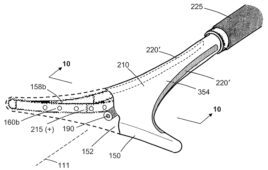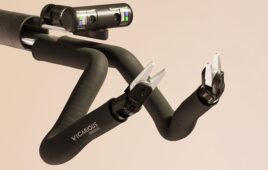As medical devices become more connected and digital, the shift is changing the game when it comes to IP lawsuits.

[Image from Unsplash]
Bornstein is co-chair of the firm’s Global Intellectual Property & Technology Practice and Global Patent Litigation Group. He helps oversee 220 IP attorneys and about 120 registered patent attorneys in what he describes as an inclusive and dynamic work environment.
His position and experience have allowed him to witness firsthand how the digitization of medtech is profoundly changing medical device patent litigation.
Bornstein recently spoke with Medical Design & Outsourcing to explain the transformation — and much more:

Scott J. Bornstein
MDO: You’ve worked on patent litigation cases in a variety of industries. Is there anything that makes the medical device industry especially unique when it comes to patent lawsuits?
Bornstein: With a couple of exceptions, medical device litigation is probably the most contentious, the most heavily litigated. It can be very expensive. There’s obviously a lot of money being made in the medical device industry, and the companies fiercely protect their technology as you would expect and hope. There remains a great deal of competitor litigations that are very heavily fought out and I think tend to go more frequently to trial than other areas.
MDO: Because the medtech space is heavily regulated, it can take years to get a medical device cleared or approved. How much does that play into the fierceness of the litigation?
Bornstein: I think that’s a huge factor. You see it with both medical device and with pharma, which are obviously both regulated industries. After you spend the time to get not only the patents but also the FDA approval, which can cost millions of dollars, you’re naturally going to try to fiercely protect it.
MDO: When it comes to medical device patent lawsuits, what is different now versus five or 10 years ago?
Bornstein: I think one of the things that’s been changing is the influx of technology as part of medical devices. I think that’s brought some new entrants into the field. It’s also opened up pathways which maybe didn’t exist before. We’re seeing the use of artificial intelligence and connected medical devices that are giving real time data to the patients and to medical care providers, which is greatly increasing the quality of care that doctors and nurses can provide to patients. But it also brings interesting and unique patent challenges which didn’t exist before.
MDO: What kind of challenges?
Bornstein: Section 101 is the section of the patent laws which essentially determines what is patentable subject matter. You’re not permitted, for example, to patent a law of nature. Typically, 101 patentability challenges were largely the domain of the software, business methods, financial services world. In the medical device space, Section 101 was historically not really an issue, but it has definitely crept in. Data collection, transmitting data, providing data in a unique form, storing data on a computer — those types of things that historically weren’t really done in the medical device space are now being done quite frequently. And those concepts of just storing and transmitting data are not considered patentable subject matter. While that’s a developed area of law, in the medical device space it’s still emerging. I think there’s still some questions about how to apply it one-on-one in the medical context. As a result, you’re seeing a lot of courts grappling with that.
MDO: How is the world of medical device patent litigation shifting in this new environment?
Bornstein: You saw a pretty dramatic drop off in litigation a couple of years back. And I think that in part has to do with [Alice Corp. v. CLS Bank International, a 101-related case decided by the U.S. Supreme Court in 2014]. Right around 2012–13 there was a kind of a break off where the litigation started to diminish, and the patent prosecution cases still continued to expand. There were several factors: the Alice decision eventually and the introduction of [inter partes review (IPR)] into the mix. Venue cases occurred which limited forum shopping to Texas and elsewhere. You’ve seen a lot of things that I think change the field generally.
MDO: How are the IPRs reducing litigation?
Bornstein: Implemented by Congress several years ago, the IPR is an alternative way to challenge the validity of patents. Not only can you do it in the district court when you’re sued for infringement, but you can oftentimes contemporaneously challenge the validity of the patent before the Patent Trial and Appeals Board, PTAB. It’s become very common to challenge patents using IPRs, and it’s much less expensive than district court litigation. Historically, there’s been a very high success rate in using IPRs to invalidate claims that are otherwise serving as litigation. For a fraction of the cost of litigation, you can challenge the patent, and if you succeed, the litigation will ultimately go away. The other advantage of IPRs is that often times the district court litigation will be stayed or put on ice pending resolution of the IPR.
MDO: When it comes to protecting medtech IP, are there assumptions that are just no longer valid?
Bornstein: Certainly 101 is a big part of it. Historically you didn’t have to write your claims carefully to avoid 101 issues, and now you have to focus on whether or not the claims that you’re drafting are going to overcome those challenges. The other issue is that with medical devices, the applications are not only filed in the United States, they’re filed worldwide. And there are very different laws about patentability, specifically of software and computer-related inventions. It’s much more difficult at this stage to get them in Europe, for example, than it is in the United States. And it’s a challenge in the United States, let me be clear. But in Europe, there really has to be a technical aspect of the invention for it to be patentable. You have to be cognizant not only of your strategy in the United States but about your worldwide patent strategy, particularly in the medical device connected space.




